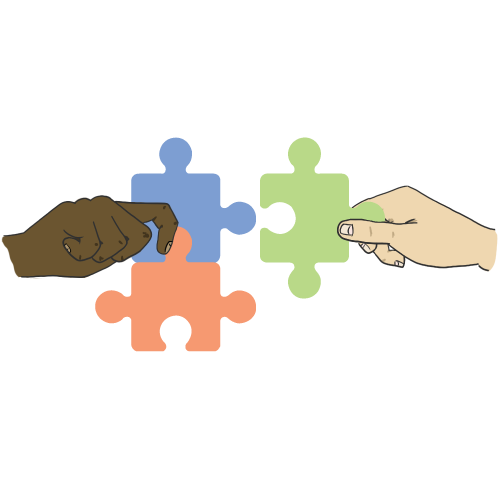Card

Puzzled
This grouping strategy utilizes puzzle pieces made from relevant visuals. By using puzzle pieces to group participants, the strategy encourages socialization while developing analytical and visual intelligence.
Puzzled
Summary
Each participant selects one of several prepared puzzle pieces and forms a group with others whose pieces complete their picture. To do so, participants move about the room, talk with peers, and develop and deploy strategies to analyze other participants’ puzzle pieces. This encourages participants to further develop their visual and spatial skills. This can also be used as a grouping mechanism for the Jigsaw reading strategy.
Procedure
To prepare, select a visual or visuals relevant to the topic of study. This might take the form of a photograph, comic strip, diagram, or similar visual. Cut the image(s) into puzzle pieces. Create the right number of pieces to supply the desired number of participants in each group and to ensure the proper level of difficulty (more pieces means greater difficulty). If a puzzle has more pieces than participants, use glue to combine pieces.
To begin the activity, invite each participant to take a puzzle piece.
Invite participants to find others whose pieces help to complete their picture. If participants struggle, offer ideas on how participants can organize themselves or analyze their visuals.
This activity can also be extended for use as a grouping mechanism for the Jigsaw reading strategy. After participants split away from their initial groups, they can be asked to regroup according to the quadrant in which their puzzle piece was positioned.
Adapted from Cagle, L. (2002). Cooperative grouping strategies for classroom teachers. Dare to Differentiate. https://daretodifferentiate.wikispaces.com/file/view/Cooperative+Grouping+Strategies.pdf


